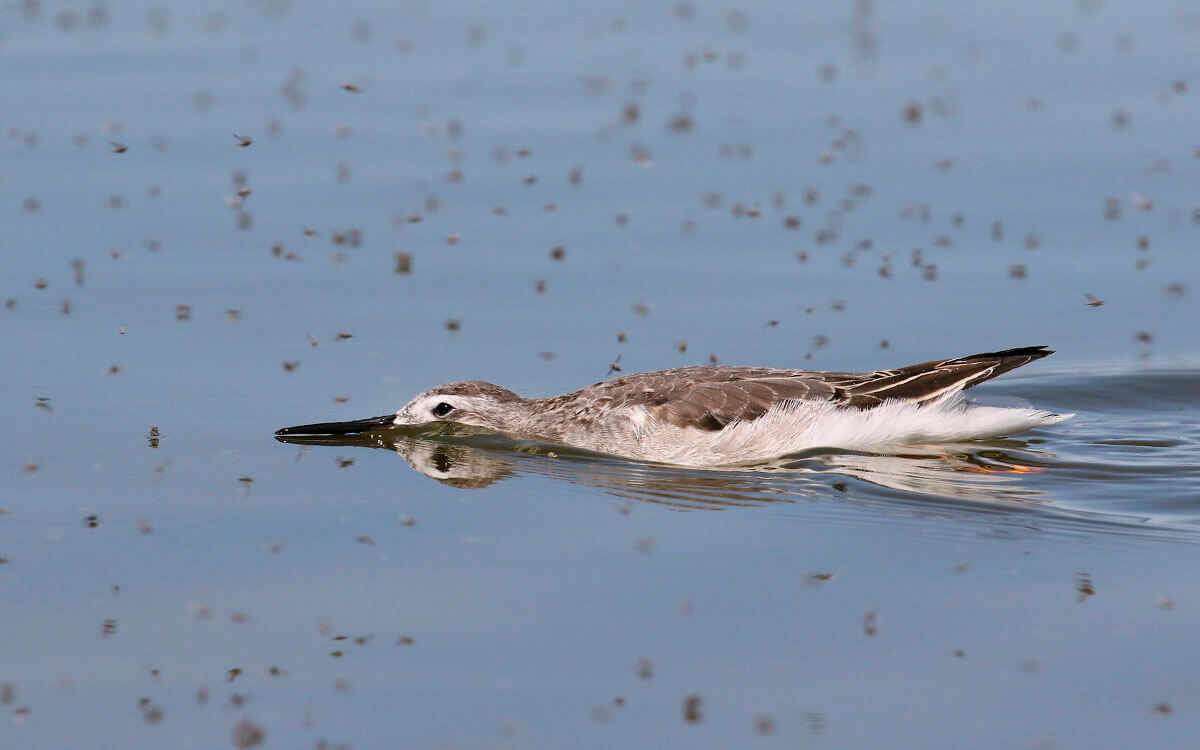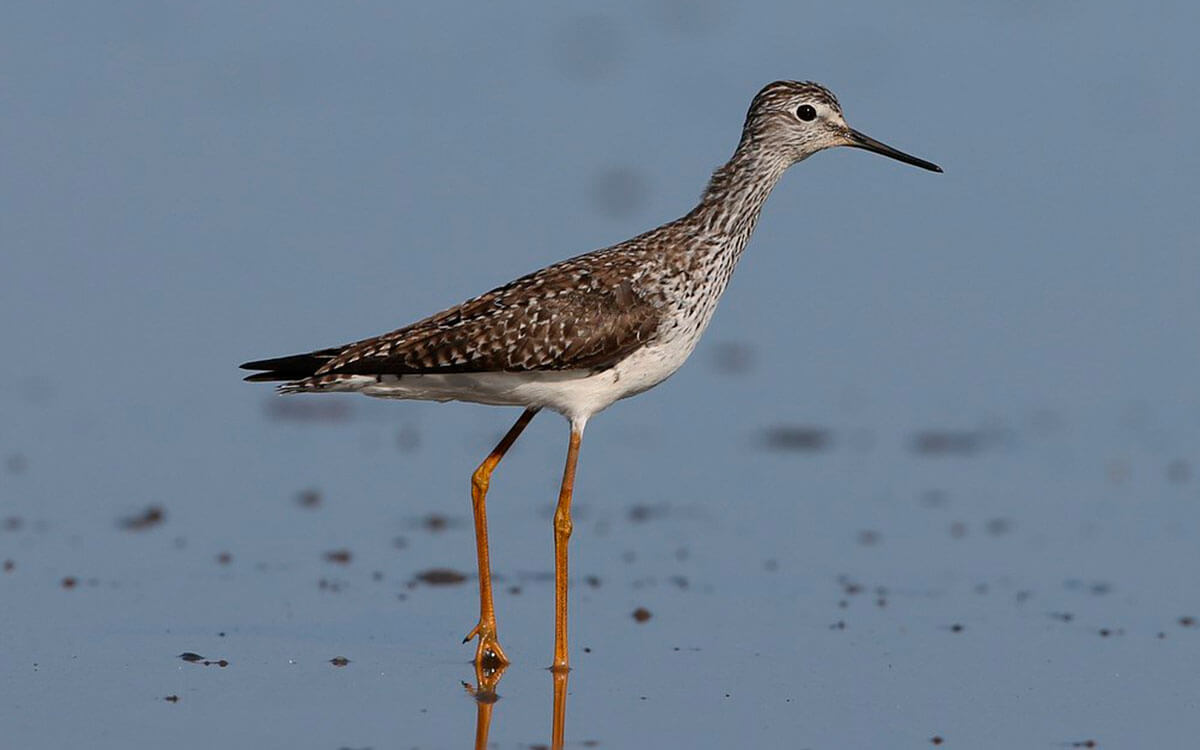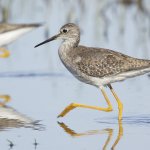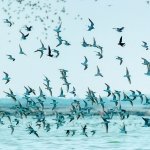World Migratory Bird Day (WMBD) is a global campaign that educates and promotes conservation efforts for migratory birds and their journeys across borders. This year, WMBD highlights insects’ vital role in sustaining migratory bird populations.
Insects, found across nearly all ecosystems, are a vital food source for migratory birds during their extensive travels and annual life cycles. Each bird species has evolved over millions of years to feed on certain foods. From the American Avocet’s (Recurvirostra americana) skillful use of its upward-curved bill to the Dunlins’ (Calidirs alpina) meticulous foraging in mud, these birds showcase remarkable adaptations to secure their prey. Sandpipers and other small shorebirds search for bug larvae just below the surface of the mud with their short beaks. At the same time, Wilson´s Phalarope (Phalaropus tricolor) can be seen chasing flying insects like brine flies. During their migratory stopovers, birds actively search for insects in fields, forests, wetlands and other habitats. This is possible because bird migrations are often synchronized with the abundance of resources in the environments they visit.


Left: Wilson’s Phalarope (Phalaropus tricolor) by Max Malmquist at Great Salt Lake (USA). Right: Lesser Yellowlegs (Tringa flavipes) by Brad Winn.
The plight of bird species that depend on insects for survival is related to the decline in insect numbers. Deforestation, pesticide use, light pollution, and climate change, among other threats, aggravate this insect decline.
Insects not only serve as food for birds. They have relevant functions as pollinators, pest control, maintenance of soil health, and they allow us to delight in their beauty as we enjoy their colors. In their native environments, which include marshes, streams, grasslands, and forests, the insects become prey for birds and bats among many wildlife groups as they fly and move.
In 2024, World Migratory Bird Day seeks to encourage people to take action to preserve both insects and birds. Simple steps, from gardening with native plants to reducing the use of pesticides to advocating for insect conservation laws, can make a significant difference. World Migratory Bird Day seeks to unite global efforts to conserve migratory birds and their habitats and inspire collective action across borders, fostering a better future for bird species worldwide.
The celebration of World Migratory Bird Day is organized by Environment for the Americas, the Convention on the Conservation of Migratory Species of Wild Animals (CMS), and the Agreement on the Conservation of African-Eurasian Migratory Waterbirds (AEWA).
For more information on World Migratory Bird Day, events and access to promotional material, visit: https://www.worldmigratorybirdday.org/






